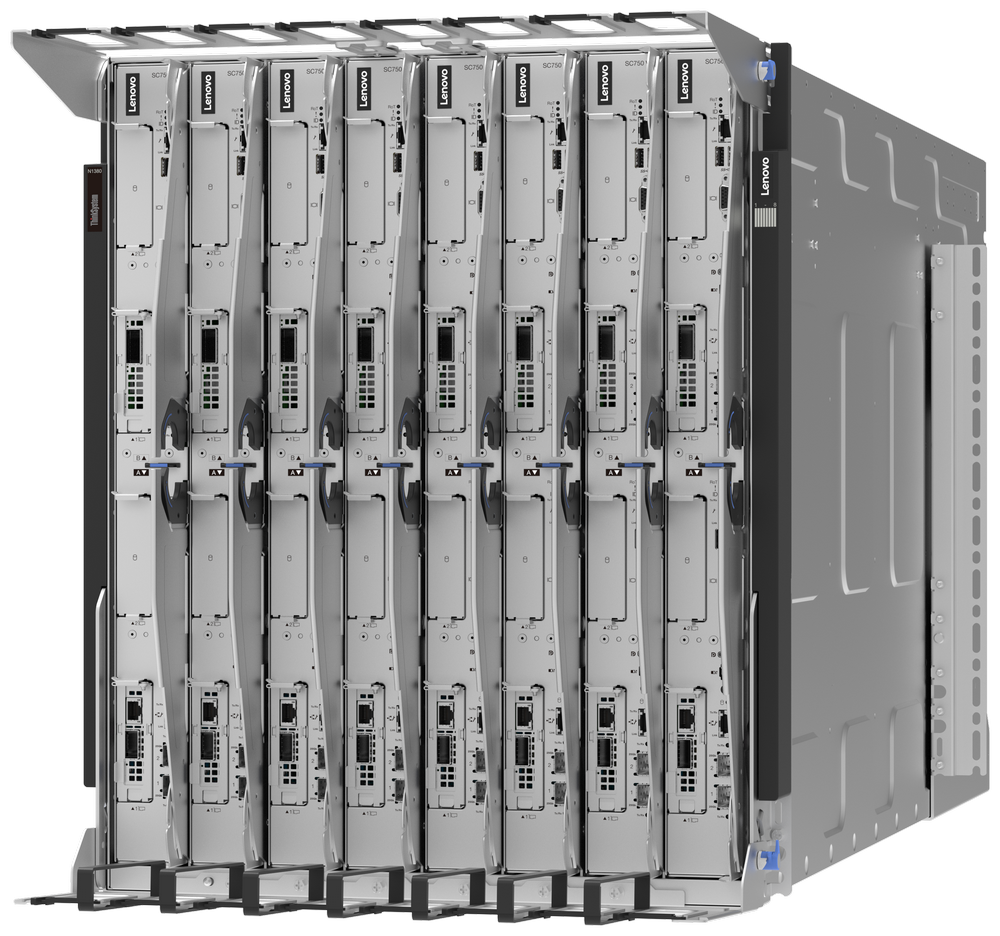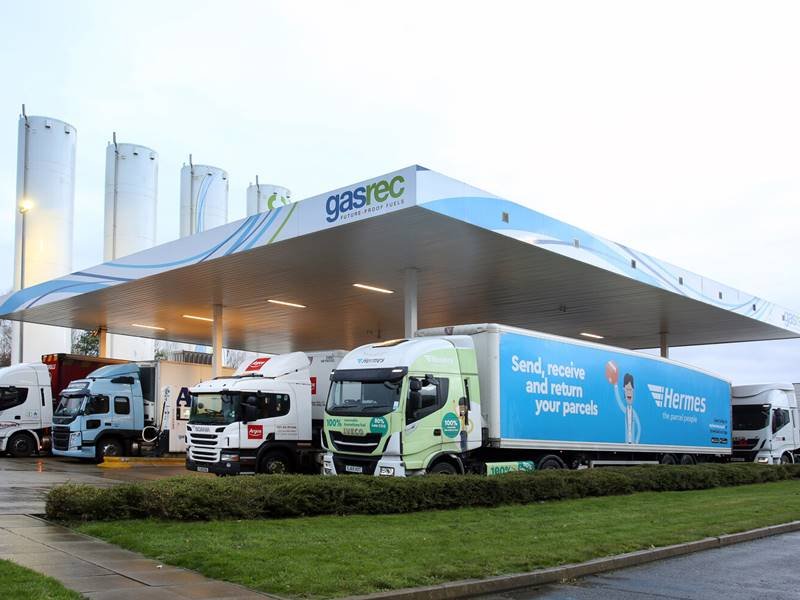£50m Care Home Portfolio, Server Farms and AI, Smart (Mini) Cities, and other potentials globally
- Details
- Written by: Lenovo
- Category: Current Developments
- Hits: 3225
 Lenovo ThinkSystem N1380 Neptune Chassis
Lenovo ThinkSystem N1380 Neptune Chassis
Empowering Exascale to Everyscale™: Your Foundation for a Lenovo Neptune HPC or AI Supercomputer.
Datasheet
“Moving from air cooling to Lenovo Neptune® liquid cooling, our cluster delivers four-times greater performance than our previous infrastructure within the same physical footprint, increasing our processing power so we can run cutting-edge research faster.”
- Scott Yockel, University Research Computing Officer, Harvard University
Exascale technology, industry standard footprint
As the demand for more powerful applications like AI has skyrocketed, data centers have grown more crowded, hotter and consume more energy. Lenovo’s next generation of Neptune liquid cooling technologies was designed to address those challenges. The ThinkSystem N1380 Neptune chassis is the core building block, built to enable exascale-level performance while maintaining a standard 19-inch rack footprint. The ThinkSystem N1380 Neptune chassis uses liquid cooling to remove heat and increase performance and is engineered for the next decade of computational technology.
Lenovo Neptune® is the foundation of the Lenovo N1380 Neptune® introducing a new generation of the longest proven, most advanced, direct and warm water cooling available in the industry. An innovative Power delivery and distribution design around a patented integrated Power Conversion Station enables broadest data center compatibility. And finally, the formfactor itself was engineered from ground up to provide the additional space needed without breaking the data center standards while maintaining the scalability for customers of every size.
The next cool era of Lenovo Neptune
Since 2012, Lenovo’s direct water-cooling has consistently led the industry with advanced cooling innovations. Our dedication to quality-engineering and performance-design is demonstrated by over a decade of delivering reliable water-cooled solutions worldwide.
- Details
- Written by: J C Burke
- Category: Current Developments
- Hits: 13590
 Octopus Energy and a housebuilder have entered into a partnership to roll out the UK’s first homes to guarantee residents Zero Energy Bills. The construction of the properties was first announced in February of this year but now it has been revealed that Octopus Energy will be providing a bespoke tariff as part of the project.
Octopus Energy and a housebuilder have entered into a partnership to roll out the UK’s first homes to guarantee residents Zero Energy Bills. The construction of the properties was first announced in February of this year but now it has been revealed that Octopus Energy will be providing a bespoke tariff as part of the project.
These homes will come equipped with an air source heat pump, solar panels and battery storage technology. Alternatively they could also be additionally “powered by wind turbines and bio-methane powered CHP for district heating systems. Either way Octopus gets embedded power supplies with zero capital costs.
These energy efficient technologies will combine to provide “free”, clean energy around the clock, with Octopus Energy providing a tariff specifically for those living there. Octopus will also sell on the ‘surplus’ [over and above any battery storage] electricity so generated to its customers – as low cost power – thus averaging down their cost of electricity into the bargain
How many of the homes
There is no real limit to numbers in this important ‘marriage’ of construction and Energy partnership, just the finance and will power to encourage such schemes as ‘normal’.
Many of these homes will be “zero-carbon (dioxide)” in operation, meaning they can generate their own sources of energy {heating, Hot Water and Electricity], helping to reduce emissions produced by ‘normal’ domestic utilities such as electricity and heating. These concepts can also be extended to Commercial and Industrial properties.
- Details
- Written by: J C Burke
- Category: Current Developments
- Hits: 6729
The Palm Oil industry generates large quantity of wastes whose disposal is a challenging task. In the Palm Oil mill, fresh fruit bunches are sterilized after which the oil fruits can be removed from the branches. The empty fruit bunches (are left as residues, and the fruits are pressed in oil mills. The Palm Oil fruits are then pressed, and the kernel is separated from the press cake (mesocarp fibers). The palm kernels are then crushed and the kernels then transported and pressed in separate mills. In a typical Palm Oil plantation, almost 70% of the fresh fruit bunches are turned into wastes in the form of empty fruit bunches, fibers and shells, as well as liquid effluent. These by-products can be converted to value-added products or energy to generate additional profit for the Palm Oil Industry.
Palm Kernel Shells (PKS)
Palm kernel shells (or PKS) are the shell fractions left after the nut has been removed after crushing in the Palm Oil mill. Kernel shells are a fibrous material and can be easily handled in bulk directly from the product line to the end use. Large and small shell fractions are mixed with dust-like fractions and small fibres.
Moisture content in kernel shells is low compared to other biomass residues with different sources suggesting values between 11% and 13%. Palm kernel shells contain residues of Palm Oil, which accounts for its slightly higher heating value than average lignocelluloses Biomass. Compared to other residues from the industry, it is a good quality Biomass fuel with uniform size distribution, easy handling, easy crushing, and limited biological activity due to low moisture content.
Press fibre and shell generated by the Palm Oil mills are traditionally used as solid fuels for steam boilers. The steam generated is used to run turbines for electricity production. These two solid fuels alone are able to generate more than enough energy to meet the energy demands of a Palm Oil mill.
- Details
- Written by: J C Burke
- Category: Current Developments
- Hits: 6887

|
Type of fuel - source Government 24th Mar 2022 |
Rate |
|
|
Petrol, diesel, biodiesel and bioethanol |
52.95 p per litre |
5p reduction in budget |
|
Liquefied petroleum gas (LPG) |
28.88 p per kg |
reduced in budget |
|
Natural gas used as fuel in vehicles, for example biogas |
22.57 p per kg |
reduced in budget |
|
‘Fuel oil’ burned in a furnace or used for heating |
9.78 p per litre |
reduced in budget |
Transport Fuel Duty and Heating Fuel Duty
Firstly, looking at these tables, one wonders at the logic applied by those Civil Servants to arrive at such numbers? Was it a gallons to litres issue? Who can tell.
With the reduction of 5p on Petrol and Diesel it must be stressed that LPG, CNG and LNG powered vehicles already had a big advantage in respect of “fuel duty” and have further been slightly reduced in this year's budget too [see table]. With Natural gas /bio gas at less than 50% [42.6% in fact] of even the new Petrol/Diesel duty. Also LPG [Liquefied petroleum gas] is only 54.5% of the ‘normal’ [petrol/diesel] fuel duty.
Also please note the Bio-diesel and Bio-ethanol both attract FULL duty per litre. This makes little sense given the processes involved to create these fuels – although growing crops to make these is not ideal.
